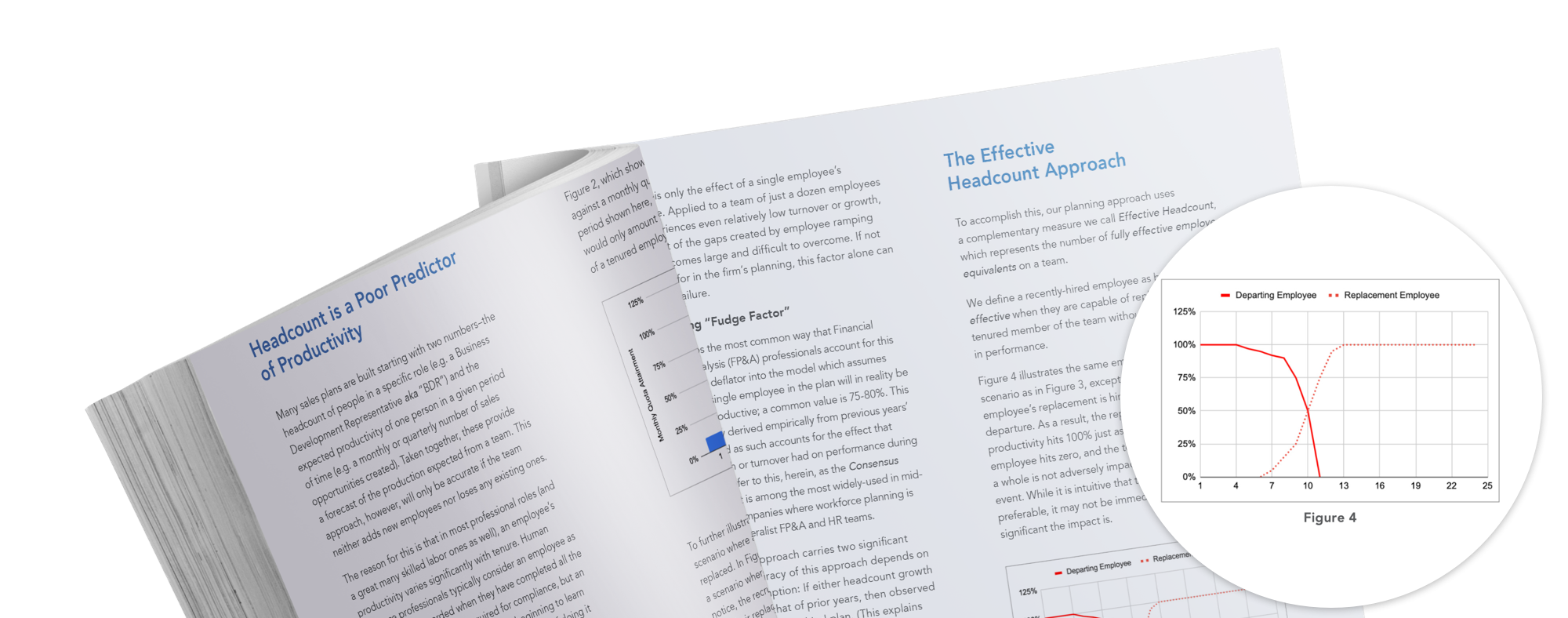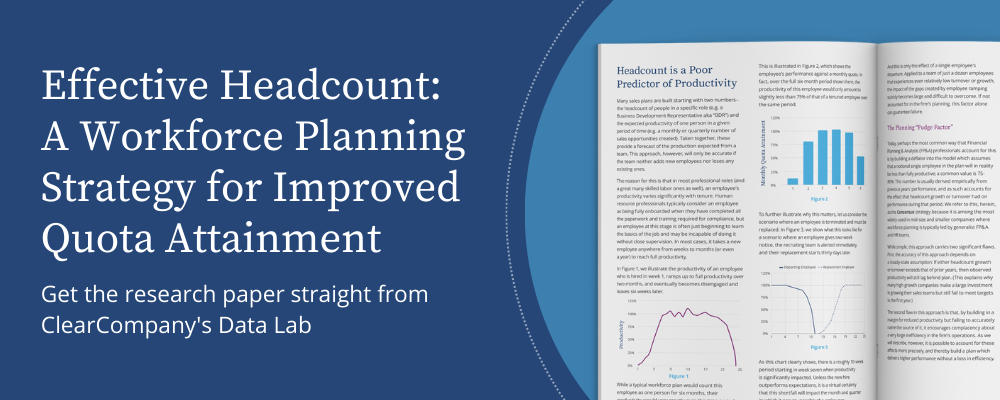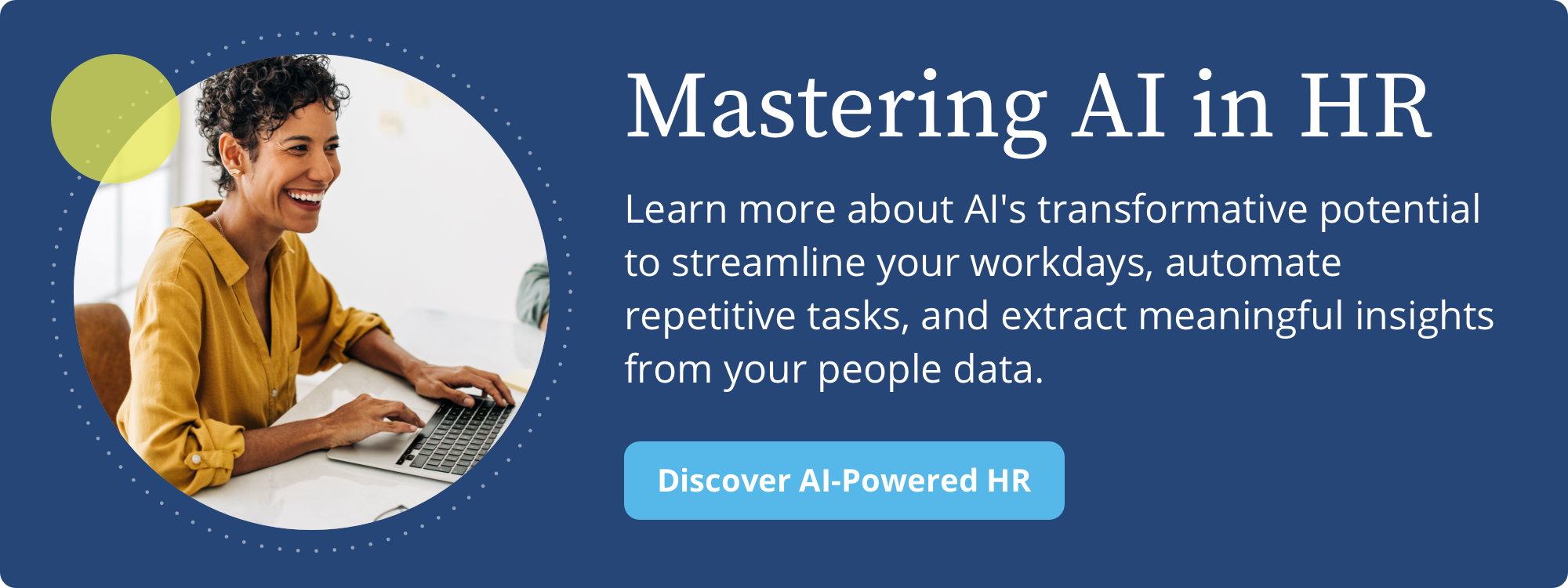Do you know your company’s magic number? In every workplace, at every organization, there’s a magic number of people that adds up to a full staff. Your HR team works to maintain that number so that every team has the people they need to be productive, even when there’s unexpected turnover.
But you’re not just working to maintain headcount — as HR professionals, you’re looking for the unique combination of skills and experiences employees must have to help your company reach its goals. You also need to anticipate the skills your business will need employees to have in the future, create career paths, and guard against turnover.
That’s where workforce planning and analytics come in. Use your real people data to make predictions, plan for future hiring needs, and reach business goals.
#WorkforcePlanning and Analytics enable HR to have a direct impact on business success. Find out more from @ClearCompany:What is workforce planning?
Workforce planning is the process of forecasting the staffing needs of your business in both the short and long term. HR teams use this business planning strategy to identify skills gaps among employees and predict future workforce needs. Workforce planning aligns your workforce and the business’s strategic objectives, both connecting employees to the big picture and ensuring the right people are in the right roles at the right time so that that big picture can be achieved.
Strategic workforce planning is also a way to protect against lost productivity when employee turnover happens. Inevitably, workers will quit, others will retire, and still, others will be terminated. Sometimes these events are unexpected, sudden decreases in headcount that leave teams scrambling to fill the productivity gaps that result. Workforce planning accounts for these situations so you can quickly fill those gaps and avoid lost productivity.
What is workforce analytics?
Workforce analytics or people analytics — the terms are often used interchangeably — is the process of analyzing your company’s people data and using it for decision-making.
While workforce analytics and HR analytics are sometimes used to mean the same thing, they are different. Workforce analytics refers specifically to the breakdown of employee data, and HR analytics refers to the analysis of HR processes and procedures and their impact on the business.
Workforce analytics are used to inform workforce planning strategies and is necessary for a strategy that is more than just departmental headcount goals. Workforce analytics helps you spot trends across important metrics including employee performance, engagement, and retention. Analytics help you solve problems and improve those metrics by drawing conclusions from people data and showing you:
- Trends among your workforce, e.g. an unusually high number of terminations in a department in one quarter
- Why they happened, e.g. low performance ratings in the department during the same quarter
- What might happen in the future based on current people data, e.g. persistently low performance ratings that suggest terminations could increase
- How to influence the trend in the direction you want, e.g. offering additional employee training or touching base with department heads on how to conduct performance reviews
Read our post, What is People Analytics? Definition, Benefits, Examples, for a more in-depth look at workforce analytics, how to use them, what to track, and more.
5 factors that contribute to workforce planning
There is a myriad of factors for your HR department to consider at every step of workforce planning, including these five things:
1. Current and Future Company Goals
Your business’s current circumstances and future plans steer your workforce planning strategies. Is your company a brand-new startup or an established industry player? A close-knit office of fewer than 100 people or a nationwide franchise with thousands of employees?
Workforce planning is also driven by company objectives: are you hiring quickly now or planning to next year? Will the business grow to offer any additional products or services? Are there plans to implement new software products or tools for employees in the near future, or are your software solutions well-established? All of this affects HR’s planning.
2. Company Culture
Company culture affects whether or not your organization is a competitive employer that is able to recruit and retain top talent. 56% of workers said culture is more important than salary for job satisfaction, and it’s one of the most common reasons employees switch jobs. That means an undefined company culture could be a leading cause of turnover and impact talent pipelines.
“You’ll win top talent in a tight labor market by competing on more than salary. Our analysis of this data shows that your firm’s culture and the experience you provide people is your differentiated asset.”
- Bhushan Sethi, Principal, Joint Global Leader, People and Organization, PwC US
Take a survey to find out how employees feel about your company culture. Then if needed, your HR team can look for ways to strengthen culture and attract and keep the best-fit candidates.
3. Current and Future Talent Supply
Workforce planning is impacted by the current and future availability of talent. Labor and skills shortages, your company’s attrition rate, and your candidate pipelines determine your talent supply. If workforce analytics suggest that your company will likely have difficulty hiring for a certain skill set, for example, your workforce plan can account for the longer timeline.
Are you #WorkforcePlanning this year? Current and future supply of talent, like anticipated skills shortages, should be considered in your plan. #HRstrategy #PeopleAnalytics4. Turnover and Retirement Rates
Average turnover and anticipated retirement rates help HR anticipate and prepare for these events, even if they occur unexpectedly. This gives your team insight into skills that may be lost, how to adjust and prevent lost productivity, which skills are must-haves when hiring replacements, and skills gaps that will need to be filled in the future.
5. Technology’s Impact
Technology is enabling increased productivity and in some cases, even eliminating roles. If you expect advances in technology to have an impact on headcount or employee performance, it should be considered in workforce planning.
Why workforce planning and analytics are important
Workforce planning and analytics leverage data to help you make better decisions to guard against uncertainties, address gaps in your workforce, and drive business performance.
Hire the right people, nurture their skills, and plan for success with workforce planning and analytics. Use this strategy to:
- Find and hire candidates whose skills and experience are the right fit for every position and with the potential for long-term growth
- Predict which employees will be high-performers based on their skills and performance so you can retain them
- Discover what drives employee engagement to help improve performance and retention
- Align talent management goals with organizational goals
- Conduct succession planning and determine potential candidates for promotions
Workforce analytics software is necessary
There’s a large amount of data collection involved in workforce planning. Using manual or spreadsheet-based systems to maintain all of that data leads to workforce plans that are outdated as soon as they’re completed. There’s no way to adapt them quickly as circumstances change, and it’s nearly impossible to maintain the most current information. And as always with manual processes, there’s the risk of human error in data entry.
Without the workforce analytics tools available in workforce planning software, analyzing your people data isn’t feasible. Software that is part of a talent management ecosystem is the best way to collect accurate data with fewer errors to create effective staffing plans that can be adjusted in real-time. It also allows your team to analyze extensive people data at every stage of the employee lifecycle so they can learn what’s happening and make improvements to the employee experience.
Implement a full-spectrum talent management system to consolidate and analyze your people data without adding to HR’s existing workload. Plan for future business needs accurately, execute data-informed people initiatives, and build culture deliberately enabled by a modern platform equipped with the tools and strategies you need.
The most effective workforce planning strategy
Your workforce planning can account for both expected and unexpected turnover with the ClearCompany Effective Headcount Approach. This staffing strategy was developed by ClearCompany experts and tested in more than 10,000 scenarios. The result? Teams that met — and often exceeded — their goals regardless of turnover 95% of the time.
Avoid the productivity dips that happen when employees leave with Effective Headcount. Use your own data to predict resignations and retirements, plan for quits and terminations, and help teams reach their goals despite turnover events.
Get the Effective Headcount Report and learn how your HR team’s workforce plan can help teams stay productive when turnover strikes.




